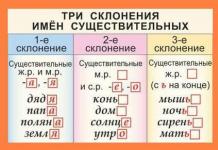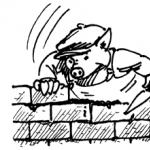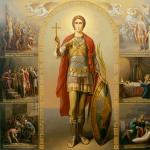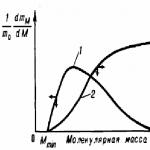(mercenary soldiers of the East India Company)
7 princely states of India
Indian population
British Army
20 princely states of India and Nepal
Sepoy Rebellion(Also Indian popular uprising 1857-1858, Sepoy Rebellion) - a mutiny of Indian soldiers against the brutal colonialist policies of the British in 1857-1858. The rebellion began in the north from Bengal to Punjab and central India. The main initiative was taken by the army and the recently removed maharajas, but in some areas it was supported by peasants, and it turned into a general uprising. Delhi was captured by the rebels, but was later surrounded and taken by the British. The rebellion ended the power of the British East India Company and led to its replacement by direct rule of the English Crown.
The uprising caused a stormy wave of a wide variety of responses, both in the British press and literature (including the ultra-racist statements of Charles Dickens) and beyond its borders (especially in France), where certain circles spoke in favor of an alliance with the Russian Empire in order to oust Great Britain from Asia.
Explanations
Offending religious feelings also played a role. The newest Enfield rifle with a cap lock was supplied with cartridges wrapped in lard-soaked paper. During charging, the cartridge winding had to be bitten, while in Hinduism it is forbidden to eat cow meat, and in Islam a pig is an unclean animal. By the time the British realized their mistake, it was already too late. Although the sepoy units were specially recruited on a mixed basis, this did not prevent the collusion of Muslims and Hindus.
The revolt began among the army of the Bengal Presidency of the British East India Company; The territory included in it corresponds to modern Bangladesh, and the Indian states of West Bengal, Bihar and Utta Pradesh. Most of the soldiers who rebelled came from Utta Pradesh, particularly its northwestern provinces and Oudh; many of them came from landowning families. The sepoys who rebelled were both Hindus and Muslims.
The beginning of the uprising
There were calls for jihad from some Muslim leaders, but divisions soon erupted between Sunnis and Shiites. Many Sunnis refused to join the uprising, considering it Shiite. Some Muslims, such as the Ismaili leader Aga Khan I, supported the British.
Consequences
Despite the defeat of the popular uprising, the British colonialists were forced to change their policies. On August 2, 1858, the English Parliament passed a law on the liquidation of the East India Company and the transfer of control of India to the crown. The colonialists made Indian princes and landowners their allies by passing a series of laws that secured their feudal property rights to land. At the same time, the colonial authorities had to take into account the enormous discontent of the peasants and issue tenancy laws, which somewhat limited the feudal arbitrariness of the zamindars (see Zamindari).
Disputes over the name and nature of the events
There is strong disagreement in the world about the name of the events that took place.
In modern India, the names “War of Independence 1857” or “First War of Independence” are accepted.
In Britain, the terms “Indian Mutiny”, “Great Indian Mutiny”, “Sepoy Mutiny” are often used. Sepoy Mutiny), "Sepoy Rebellion", "Sepoy War" (eng. Sepoy war), "Great Mutiny", "Rebellion of 1857", "Mohammedan Rebellion", etc.
The expression “Great Mutiny” is perceived by many historians and politicians in India as unacceptable and offensive. On the other hand, a number of European historians do not consider these events to be a war of Indian independence, since India itself at that time was fragmented into several hundred states, and the rebels defended the interests of not all of them.
In 2007, India celebrated the 150th anniversary of the First War of Indian Independence.
The British began to comprehend the events already in 1857, when the uprising was in full swing. In July 1857, Benjamin Disraeli called what was happening a "national revolution", while Lord Palmerston called it a "military mutiny".
- There was no united India at that time;
- The uprising was suppressed by the native troops of the Bombay and Madras armies, Sikh and Gurkha regiments. 80% of the soldiers who participated in the suppression of the uprising were themselves Hindus;
- Many local rulers were keen on fighting each other rather than the British;
- Many of the rebel sepoy regiments fled to their homes;
- Not all of the rebels supported the return of Mughal power;
- The Great Mogul had no real power over the rebels;
- The revolt was limited to the northern and central regions of India;
- The uprising split along religious, ethnic and regional lines;
The sepoys remained the core of the uprising, and the entry of the local population into the rebel forces remained limited. To some extent, this was facilitated by the traditional caste system, which allowed only representatives of the highest castes from the Kshatriya (warriors) and Brahmans (priests) varnas to take up arms. Thus, the majority of the population could not actually actively participate in the uprising. In particular, the Bengal Army of Sepoys itself was recruited by the British from the Rajput, Jat and Brahmin castes. Outside the caste system entirely were Sikhs (who, however, did not support the uprising), and a significant number of Muslims.
India on the eve of the uprising
In the middle of the 19th century, when all of India was already under British rule, the pace of adaptation of the Indian economy to the needs and requirements of British capitalism accelerated significantly. By this time, a significant discrepancy had emerged between the growth rates of imports of British industrial goods into India and the export of raw materials from it to England. India was becoming a market faster than a source of raw materials. Meanwhile, in England, which had become the “factory of the world,” the need for Indian raw materials and food increased sharply.
It is not surprising that the British authorities took a number of measures to increase the production and export of agricultural products needed by the metropolis. During the time when Dalhousie was Governor-General of India (1848-1856), the export of raw cotton doubled, the export of grain increased 3 times, and the total export from India to England increased by about 80%.
This was facilitated by the expropriation of part of the lands of the feudal aristocracy and the higher clergy carried out by Dalhousie. Under various pretexts, Dalhousie annexed and annexed a number of princely states to the possessions of the East India Company. For example, depriving the princes of the traditional right to appoint adopted children as their heirs, the British authorities annexed Satara, Nagpur, Jhansi and some other principalities. In 1853, they forced the ruler of Hyderabad to transfer the Berar region and other cotton-growing areas to the East India Company for “repayment of debts.” At the beginning of 1856, under the pretext of “poor management,” the large principality of Oudh with a population of 5 million people was annexed to the company’s possessions, while the British deprived many representatives of the feudal nobility of their land holdings. The total territory of the Indian princely states was reduced by about one-third under Dalhousie. English officials extorted arrears from previous years that the princely collectors had failed to collect. The new land management was accompanied by an increase in taxes and the transfer of land to new owners - zamindars, who worked closely with the British colonialists.
The British authorities connected the main centers of India with telegraph lines, and construction began on the first railways necessary for the export of raw materials and the import of goods. India found itself drawn into the orbit of the global capitalist market. In 1854, the first jute factory was launched in the vicinity of Calcutta, and two years later a cotton factory opened in Bombay.
The increase in the marketability of agriculture caused by English policy did not occur as a result of a general increase in agricultural production, but due to an increase in the share of the necessary product withdrawn from the Indian peasantry. Under these conditions, the possibilities for expanded reproduction in Indian agriculture were narrowed to the limit. The increase in the production of raw materials was accompanied by a reduction in the area of food crops.
Causes of the popular uprising of 1857-1859
In the 50s of the XIX century. the contradictions that had been growing over the long period preceding the development of India reached their utmost severity.
The establishment of British rule in India sharply increased the misery and suffering of the masses. Their discontent grew.
The country was agitated by rumors about the impending forced conversion of Hindus and Muslims to Christianity. The spread of such rumors was facilitated by the increased activity of missionaries, supported and encouraged by the British authorities. The Chairman of the Board of Directors of the East India Company stated in the British Parliament: “Providence has entrusted the vast Hindustan to England so that the banner of Christ may fly victoriously throughout India.”
There was also growing dissatisfaction among part of the feudal aristocracy, small feudal lords and the community elite, who were greatly affected by the agrarian-tax policy of the colonial authorities and especially by the expropriations of Dalhousie.
The general increase in discontent was reflected in the mood of Indian soldiers and officers. Sepoy garrisons became centers that accumulated this discontent.
Situation in the Anglo-Indian Army
Of the three sepoy armies - Bengal, Madras and Bombay - anti-British sentiments were especially widespread in the Bengal, whose numbers significantly exceeded the numbers of the other two armies combined. Its officers and soldiers were mainly recruited from the two highest Hindu castes - Brahmans and Rajputs - and most came from the families of the communal elite and small feudal lords. Among them were many natives of Oudh. Muslim sepoys were also recruited from similar social strata into the Bengal Army.
The unrest among the sepoys was further intensified by certain points directly connected with the position of the Anglo-Indian army. Having conquered all of India, the British began to respect the sepoys less. Salaries were cut, pensions were cut, and many privileges were abolished. Sepoy regiments began to be sent to fight in Afghanistan, Iran, Burma, and China. National discrimination against Indian soldiers by British officers increased.
The introduction at the beginning of 1857 of new cartridges lubricated with beef fat and lard caused the greatest indignation. Before use, the cartridge wrapper had to be bitten with your teeth. This hurt the religious feelings of Hindu sepoys, who were forbidden by religion to eat beef, and Muslim sepoys, who did not eat pork. However, when the uprising unfolded, the sepoys did not hesitate to fire these cartridges into Delhi against the British.
The beginning of the uprising
By the end of 1856, all of India was silently seething. Anti-British agitation intensified in the sepoy regiments of the Bengal Army, in cities and villages. Calls appeared on the fences of military camps: “Brothers, kill our tyrants, there are few of them!”, “If the sepoys unite, the whites will be a drop in the bucket!”, “If we all rise up, success is guaranteed. From Calcutta to Peshawar the earth will burn.” The feudal lords, pinched by the British, became closer and established contacts with the sepoy regiments. Secret Wahhabi organizations played a major role in preparing the uprising. His ideological preparation was facilitated by the activities of the famous Muslim educator Fazl-haq.
The beginning of the popular uprising was the armed uprising of sepoys and civilians in Meerut (Merut) on May 10, 1857. The day before, the British shackled and threw into prison a group of sepoys accused of hostility to the British. Outraged by this, the sepoys of the three regiments and a large crowd of townspeople took up arms. They were joined by peasants from the surrounding villages. Having killed the English commanders, the rebel regiments moved towards Delhi. The remaining British troops in Meerut held the city, surrounded by rebel peasants. When the next day, May 11, the Mirut regiments approached Delhi, the urban poor opened the gates and let them into the city. At the same time, an uprising of local sepoys and civilians began there. The small English garrison was powerless, and the ancient capital of India fell into the hands of the rebels.
They approached the palace of the last representative of the Mughal dynasty, Bahadur Shah II, and demanded that he join the revolt. Bahadur Shah, forced to accept this proposal, was proclaimed the supreme ruler of India. The restoration of the Mughal Empire was perceived by the masses as a restoration of independence.
Hindus and Muslims united in the uprising. Emphasizing the goodwill towards Hindus, the Delhi government of Bahadur Shah banned the slaughter of cows - sacred animals among the Hindus. In turn, the Hindu leaders of the uprising supported Muslim religious symbols. The proclamations called: “Brothers Hindus and Muslims!.. God does not want our submission to the English oppressors. Did he not instill in the hearts of Hindus and Muslims alike a burning desire to expel the British from the borders of our homeland?”
Further successes of the uprising
The capture of Delhi served as a signal for popular uprisings in other parts of the country. The main centers of the uprising were the regions of Central India (along the middle reaches of the Jumna and Ganges).
In Kanpur, an important role in preparing the uprising was played by the adopted son of the last Maratha Peshwa, Nana Sahib, who was deprived of his rights and pension by the British. Nana Sahib was associated with secret organizations of the sepoy regiments of Kanpur. He became one of the most prominent leaders of the rebellion.
On June 4, the sepoys of two tyulks set out in Kanpur. They captured the treasury, the arsenal, the prison, freed the prisoners and sent delegates to two other regiments, which soon went over to the side of the rebels. From the very beginning, the masses actively participated in the Kanpur uprising. There, detachments of peasants and artisans were formed. The rebels besieged the British who had settled in the Kanpur fortress, who were forced to capitulate at the end of June. Nana Sahib proclaimed himself a Peshwa and began to rule the territory liberated by the Kanpur rebels as a vassal of the Delhi emperor.
At the same time, sepoy troops rebelled in the recently annexed principality of Jhansi; some of them went to help the rebels in the Delhi region. In other Maratha principalities - Indore and Gwaliyar - sepoys killed English officers. But their princes, having declared to join the uprising, pursued a treacherous policy. They tried in various ways to delay the advance of local sepoy regiments to the north to participate in battles with the British.
The most important center of the uprising was Oudh. Here back in 1856, shortly after the annexation of the principality; Active preparations for an anti-British uprising began. One of the organizers of the popular movement in Oudh was the religious preacher Maulavi Ahmad Shah, a former petty feudal lord. He sent out proclamations and delivered sermons exposing the British. On the eve of the uprising, Ahmad Shah was captured by the British authorities and was awaiting death sentence in prison. He was freed by the rebel sepoys.
Unlike the uprisings in other areas, the uprising in Oudh began with the action not of sepoys, but of peasants. The sepoy regiments sent by the British against the peasants in the vicinity of the capital of the principality, Lucknow, went to the side of the rebels and killed the English officers. At the same time, the sepoys in Lucknow rebelled. The urban population, primarily artisans, also rose up against the colonialists. According to an English historian, “within 10 days the English administration in Oudh disappeared like a dream. The troops mutinied, and the people ceased to be loyal to the government.” It was announced that independence was restored and the infant son of the former sovereign was proclaimed maharaja. The Regency Council was headed by the Princess Mother. At the insistence of the sepoys, Ahmad Shah was included in its composition.
The popular uprising took the colonialists by surprise. Over the vast territory from Delhi to Calcutta they had only a few regiments of British soldiers. In the vast densely populated areas of Hindustan, the rebellious people eliminated the colonial regime.
The nature and driving forces of the uprising
The uprising that began was a great liberation uprising of the people of India against the British colonialists. The sepoys struck the first blow against the colonialists and became the military core of the uprising. But its main driving force was peasants and artisans. The main goal of the rebels was the liberation of Hindustan from foreign domination and the expulsion of the British colonialists. This united peasants, artisans, soldiers, and some feudal lords.
It is known that from the first steps of their aggressive policy in India, the British colonialists sought to rely on princes and landowners and saw them as their main support. But with the transformation of India into a colony, the British became the main exploiters of its workers, and the Indian feudal lords had to play a subordinate role. In addition, on the eve of the uprising, some feudal lords lost their principalities and lands. All this led to the action of some Indian princes and landowners against the British. The Indian princes, the feudal nobility, who joined the uprising, wanted to restore their power while maintaining the feudal order. During the uprising, many of them showed cowardice and indecisiveness and even went over to the side of the British.
The fundamental interests of the people, who were the main driving force of the anti-colonial war, demanded not only the expulsion of the colonialists, but also the elimination of feudal oppression. Objectively, the participation of the masses in the war of liberation also had an anti-feudal orientation. Outwardly, it manifested itself in actions against the landowners-zamindars of the new formation, who received land from the hands of the British, and against those feudal lords who betrayed the uprising.
Due to the disorganization and dispersal of peasants and artisans, feudal elements became the leaders of the uprising. But as the uprising unfolded in the rebel camp, the contradictions between the popular masses and the feudal nobility deepened, betraying the cause of the struggle for independence,
Very soon other weaknesses of the uprising became apparent. It did not find support in south India. In the north-west, in Punjab, there were only isolated, isolated actions of sepoys, which the British brutally suppressed, relying on the support of the Punjabi feudal lords: The colonialists managed to use religious discord between Sikhs and Muslims and the traditional hostility of the Sikhs to the Mongol power. The Bombay and Madras armies did not support the rebel sepoys of the Bengal Army. It must be assumed that, along with other reasons, it was also due to the fact that these armies, unlike the Bengal army, were formed by the British from the most disadvantaged representatives of the lower castes, for whom military service seemed to be a happy way out of hopeless need and poverty.
The Spai units of the Bengal Army, which formed the military core of the uprising, acted separately, without common leadership.
The position of the British was made easier by the fact that a significant part of the feudal lords took their side from the very beginning. The troops of some principalities participated together with the British in suppressing the uprising.
Battles for Delhi
During the first months of the uprising, its main center was the Delhi region. In June, large British forces were transferred here from Punjab. The siege began. The rebels steadfastly defended their capital.
As the inability and unwillingness of Bahadur Shah II and his entourage to launch a people's war against the colonialists became clear, the contradictions between the masses and the feudal leadership deepened. The popular masses were unable to nominate military or political leaders from among themselves, but individual people from the feudal environment tried to implement policies that, to a certain extent, took into account the aspirations of the masses. Among them, Bakht Khan stood out - a sepoy officer, a member of the Wahhabi organization, who entered Delhi in July at the head of the united troops, consisting of sepoy units and Wahhabi detachments. He became one of the outstanding military and political leaders of the uprising. At the council of regiment commanders located in Delhi, Bakht Khan was elected commander-in-chief. At the same time, the Council of the Rebels was formed. It included six representatives of the sepoys and four representatives of the civilian population. Formally, the head of the Council of the Rebels was Bahadur Shah, but in fact it was headed by Bakht Khan.
The rebel army, supported by the population, considered itself the bearer of power. The main motto of the sepoys was: “Man belongs to God, the country belongs to the Shah, and power belongs to the army.” It is characteristic that even the Shah’s seal was taken from Bahadur Shah and for some time was in the hands of the Council of the Rebels.”
The Council tried to implement some measures that reflected the demands of the masses. Taxes on salt and sugar were abolished and strict penalties were introduced for secret hoarding of food. The families of fallen soldiers were allocated a tax-free land plot. Rich merchants were subject to special taxes in favor of the rebel army. The council addressed the emperor with a letter calling for an end to abuses in tax collection and to improve the situation of the peasantry. Bakht Khan issued an order for the general arming of the townspeople. Bakht Khan and some members of the Council of Rebels sought to limit the influence of the Shah's feudal entourage. Apparently, knowing about the abuses of the Shah family, Bakht Khan declared that he would cut off the nose and ears of even a prince of royal blood if he was caught in theft.
The feudal elements were increasingly inclined to end the struggle. Many of them entered into secret relations with the British and told them military secrets. There is reason to believe that Bahadur Shah also sought an agreement with the British. Rumors even spread about his attempt to flee to the enemy. All this weakened the defenders of Delhi.
While the Punjabi army of the British was besieging Delhi, the British troops, marching from Calcutta, were marching up the Ganges valley. Having suppressed the uprising in Allahabad (Ilahabad) and Benares (Varanasi), they entered the Kanpur region. Stubborn fighting took place here. However, the Kanpur rebels led
fought in isolation, no direct coordination of military operations was established between Kanpur and Delhi. Regular units of sepoys and partisan detachments of peasants and artisans acted separately. Serious contradictions also emerged between local feudal lords and sepoys. As a result, the British managed to capture Kanpur in July.
The long siege of Delhi put the Delhi rebels, weakened by the betrayal of the feudal lords, in a difficult situation. At the beginning of September 1857, new British reinforcements arrived from Punjab, equipped with siege artillery. On September 14, they launched an assault and, after six days of fighting, captured the capital. Taking away the remnants of his troops, Bakht Khan invited Bahadur Shah to follow with the army to continue the fight, but the latter chose to surrender to the British.
The capture of Delhi was accompanied by monstrous atrocities. Fearing reprisals, most civilians fled the city.
The heroic defense of Delhi occupied an important place in the history of the Indian popular uprising. For four months, the struggle in the Delhi region attracted the attention of the whole country and inspired rebels in other areas.
With the fall of Delhi, the largest source of the uprising was eliminated, but the struggle continued.
In the autumn, the remnants of Nana Sahib's army, forced to leave Kanpur, were joined by the troops of Gwaliyar, who set out against the will of their prince, and individual sepoy units that broke through from Delhi. The local population continued to support the rebels, and the Kanpur area continued to be one of the important hotbeds of the uprising. But the main center of the uprising after the fall of Delhi becomes Oudh.
The development of the uprising in Oudh
From the very beginning, the uprising in Oudh became widespread. The entire territory of the principality quickly fell into the hands of the rebels. Only in the fortress located in the center of Lucknow there remained a small English garrison besieged by the rebels. Oudh became the main center of the liberation struggle, inspiring the masses of the people throughout India. The main forces of the British were also gathered here. In November 1857, the British launched an attack on Lucknow. They managed to break through to the city and remove the besieged garrison from there. But they could not hold out in Lakh-iaw and retreated to Kanpur.
Meanwhile, new British troops arrived in India, freed up after the end of the war with Iran, and part of the troops recalled from the route to China. In December there were battles with the troops of Nana Sahib. The British managed to firmly occupy the river line. Ganges and cut off the Central Indian rebels from Oudh.
During this period, contradictions between the people and the feudal nobility became more and more acute. Ahmad Shah demanded the removal of wavering military leaders from the feudal nobility and the deployment of decisive action against the British troops. In January 1858, an armed clash occurred between the troops of Ahmad Shah and supporters of the feudal elite of Oudh. After this, Ahmad Shah was thrown into prison, but at the request of the population and the army he was soon released, and he again became one of the most authoritative leaders of the rebels.
By the spring of 1858, the British command concentrated large forces to attack Lucknow. In early March, a 70,000-strong British army surrounded Lucknow. After a stubborn struggle, the British captured the city on March 14. They committed widespread plunder and unheard-of atrocities there, which lasted for two weeks.
However, the British failed to eliminate the rebel army. Retreating from Lucknow, she continued to fight under the leadership of Ahmad Shah.
Guerrilla war in 1858-1859. The open transition of feudal lords to the side of the British
After the fall of Lucknow, guerrilla warfare became the main form of armed struggle against the colonialists. In addition to Oudh, it covered Central India, where the core of the partisans became the remnants of the rebel army of Nana Sahib, which also included Delhi troops. The troops of Nana Sahib and Bakht Khan moved north and then retreated to Nepal. After this, the struggle in Central India was led by the talented partisan leader and commander Tantia Topi.
The principality of Jhansi became one of the centers of resistance in Central India. Here the defense against the British was led by Princess Lakshmi Bai, who inspired the rebels with her courage and bravery. Dressed in men's clothing, with a weapon in her hands, she fearlessly appeared in the most dangerous places. When in April 1858 the British burst into the center of the principality of Jhansi, Lakshmi Bai descended from one of the towers at night using a rope ladder and rode away from the English pursuit. She joined the Tantia Topi detachment and died in hand-to-hand combat. The peoples of India honor the memory of Lakshmi Bai, one of the legendary heroines of their liberation struggle.
The troops of Tantia Topi fought through almost the entire Central India. Fighting continued in Oudh and other pockets of resistance. But feudal elements openly sided with the British. This was facilitated by the British promise to guarantee the princes and feudal aristocracy the complete inviolability of their possessions. One of the princes treacherously captured Ahmad Shah and handed his bloody head to the British for 50 thousand rupees. In April 1859, another Rajah captured and handed over to the British Tantia Topi, who bravely accepted death. Individual rebel groups continued resistance until the end of 1859.
The great uprising of the peoples of India was suppressed with monstrous cruelty. Sepoys were tied to the muzzles of cannons and then shot to pieces. The brutal colonialists exterminated not only the rebels, but also the civilian population.
Reasons for the defeat of the uprising
The outcome of the uprising of 1857-1859. showed that at that time in India a social force had not yet emerged that was powerful enough to drive out the colonialists. Most of the vassal princes and feudal nobility, landowners-zamindars supported the British from the very beginning. That part of the feudal lords who joined the uprising and seized the leadership into their own hands was afraid of the scope of the movement and acted separately, often pursuing narrow class and dynastic goals.
During the uprising, all the weaknesses inherent in peasant uprisings not led by the advanced class appeared. Peasants and artisans were unable to put forward their own program and their leaders during the uprising. Although individual leaders of the uprising (Ahmad Shah, Bakht Khan, etc.) took into account the demands of the masses, they could not significantly influence the state of affairs.
Sinai regiments and peasant detachments acted separately and unorganized. The national, religious and caste disunity of the Indian population also made itself felt.
Under these conditions, large military units sent by the British and their military-technical superiority decided the outcome of the struggle.
Historical significance of Indian popular uprising
Despite the defeat, the uprising of 1857-1859 occupies a prominent place in the history of the peoples of India. It showed the strength of resistance of the peoples of Asia to foreign colonialists. His experience and traditions inspired new generations of Indian patriots to fight. It caused serious damage to the British colonialists and was of great international significance.
K. Marx and F. Engels, who followed the heroic struggle of the peoples of India with great attention and sympathy, saw in them allies of the revolutionary proletariat of Europe.
While the English colonialists brutally dealt with Indian patriots, the leading representatives of the English workers expressed sympathy for the struggling India. One of the Chartist leaders, Ernest Jones, called on the English workers in 1857: “The British! Indians are fighting now for what is the most sacred to man. Their cause is as just and sacred as that of the Poles, the Hungarians, the Italians and the Irish... You, the people of England, will be called upon to shed "blood and sacrifice in the defeat of one of the noblest movements the world has ever known. ... Fellow citizens! You have a nobler task than to participate in the destruction of other people’s freedoms, namely, to fight for your own freedoms.”
Russian revolutionary democrats sympathized with the Indian popular uprising. N.A. Dobrolyubov dedicated his article “A Look at the History and Current State of the East Indies” to him.
The policy of the British colonialists after the suppression of the uprising
The struggle of the popular masses had an impact on the policies of the colonialists, who had to reckon with the threat of new popular uprisings. In 1858, the English Parliament passed a law declaring India a possession of the British Crown. The East India Company was finally liquidated. The three company presidencies became provinces. The British used the liquidation of the company, which had long since outlived its usefulness, in order to blame it for the disasters brought to India by the colonialists, and to sow the illusion that with the transition of India to the rule of the British crown, better times would come for its people.
The appeal of the English Queen Victoria to India, published on November 1, 1858, contained a promise to “sacredly respect the rights, honor and dignity of the native princes” and emphasized the inviolability of the land property of the feudal nobility. The Queen of England took the caste system and other remnants of the Middle Ages under the protection of the law.
Thus, after the uprising, the colonialists intensified their policy of cooperation with Indian princes and landowners and the preservation of feudal remnants in the political system, economy, life and consciousness of the people of India. The role of Indian feudal lords as the support of the British colonial regime increased. At the same time, the colonialists began to more actively pursue a policy of inciting religious and communal hatred between Muslims and Hindus.
The British authorities took measures to somewhat defuse the discontent of the peasantry. In 1859, the “Law on Permanent Tenancy” and other acts were adopted that prohibited zamindars from arbitrarily raising rents and driving off the land those peasants who could prove that they had been renting their plot for at least 13 years. This complicated the struggle of the peasants, dividing them into different categories of tenants with different rights, and sowed illusions among some peasants about the possibility of improving their situation. Subsequently, “permanent tenants” received the right to mortgage and sell their lands. These lands gradually began to be bought up by moneylenders, merchants, and kulaks, who, in turn, rented them out. As a result, the exploitation of peasant tenants increased.
Taking into account the experience of the uprising, the British reorganized their armed forces in India. After the liquidation of the East India Company, its troops became royal troops. The number of Englishmen in them was significantly increased. Now there was one English soldier for every two or three Indian soldiers. Artillery and technical units, as a rule, were recruited only from the British. These measures increased the role of the Anglo-Indian army as the most important instrument of the colonial enslavement of the peoples of India.
Having suppressed the popular uprising of 1857-1859, the British intensified the colonial exploitation of India, finally turning it into an agrarian and raw material appendage of capitalist England.
A selection of photographs, paintings and prints relating to the anti-British Indian Rebellion of 1857-59. Almost all the drawings were made by the British in the 19th century, and therefore the sympathies of their authors are quite clear.
The Meerut mosque is the main sanctuary of the Muslim rebels, photographed in 1857.

Hansi Fortress is one of the main strongholds of the rebels. 
Kur Sing is the rebel commander in the Principality of Arrah with his retinue.

Rebel cavalry on surprisingly small horses, more like ponies. However, perhaps this is from the series “the artist sees it this way.”

Disarmament of Hindu soldiers who refused to fight against their compatriots and participate in the suppression of the uprising.

Another similar scene. Indian cavalrymen, disarmed at gunpoint, were forced to surrender not only their weapons, but also their boots.

Sepoy camel artillery.

And their elephant artillery.

Sepoys in position. As you can see, during their service in the English army they mastered field fortification quite well.

The 1st Bengal Fusiliers march from Dagshai into the rebellion zone.

The British used trained elephants as mobile observation towers and for demolishing light structures.

The fate of the English colonists, traders and officials who found themselves at the epicenter of events was unenviable. The rebels, who did not have time to escape, usually killed the British and local collaborators, sometimes along with their families.

An attack by sepoys on the British trying to escape along the river.

An English propaganda drawing depicting sepoys ready to kill each other while dividing up the loot.

Another British propaganda picture: the proud daughter of Albion courageously fights off the bestial Hindus. After such drawings and corresponding articles in the press, the great humanist Charles Dickens wrote in his diary: “If I could, I would destroy this whole people!”

Left: the allegorical Great Britain from Punch magazine, with the symbol of justice on its shield, cuts down Indians, while at the same time covering Indian women and children with its wide hips.
Right: "To the East!", a painting by Henry Nelson O'Neill depicting British soldiers being sent to India to fight the rebels.

Soldiers and an officer of the Nusseri battalion, staffed by Nepalese and taking an active part in suppressing the uprising.

The British repulse the rebel attack.

After battle. “Then we began to count the wounds...”

Dashing attack of the British on the rebel battery. It is not entirely clear why most soldiers carry rifles on their shoulders.

The ruins of the palace of the governor of Uttar Pradesh province in the city of Lucknow after shelling.

Street fight in Lucknow.

"Liberation of Lucknow", painting by Thomas Jones Barker.

Warriors of one of the Maharajas, who sent them to fight for the British in the hope of preferences.

Indians from the native police with captured sepoys.

Scots attack near Kanpur.

Fight between rebels and Gurkhas.

The Battle of Kashmir Bridge is one of the most stubborn and bloody battles of the uprising.

English siege weapons near Delhi. The rebels, defending the city, very skillfully conducted counter-battery warfare.

Delhi's Kashmir Gate, through which the British and their local allies entered the city.

Capture of the formal leader of the rebels - the last emperor from the great Mughal dynasty, Bahadur Shah, and his two sons. Later, the sons would be shot and beheaded without trial, and the British would present their heads to Bahadur Shah, who would spend the rest of his life in prison.

Shooting from cannons is the “trademark” English method of executing Indian rebels.

In the absence of artillery or the need to conserve ammunition, prisoners were simply hanged. Please note that the executioners are Sikhs.

An Indian postal block commemorating the uprising they call the First War of Independence.
Causes of the popular uprising of 1857-1859
The establishment of British rule in India sharply increased the misery and suffering of the masses. The country was agitated by rumors about the impending forced conversion of Hindus and Muslims to Christianity. There was also growing dissatisfaction among part of the feudal aristocracy, small feudal lords and the community elite, who were greatly affected by the agrarian-tax policy of the colonial authorities and especially by the expropriations of Dalhousie. Of the three sepoy armies - Bengal, Madras and Bombay - anti-British sentiments were especially widespread in the Bengal, salaries were cut, pensions were cut, and many privileges were abolished. The introduction at the beginning of 1857 of new cartridges lubricated with beef fat and lard caused the greatest indignation. This hurt the religious feelings of the Hindu sepoys.
The beginning of the uprising
The beginning of the popular uprising was the armed uprising of sepoys and civilians in Meerut (Merut) on May 10, 1857. Having killed the British commanders, the rebel regiments moved towards Delhi. The remaining British troops in Meerut held the city, surrounded by rebel peasants. When the next day, May 11, the Mirut regiments approached Delhi, the urban poor opened the gates and let them into the city. At the same time, an uprising of local sepoys and civilians began there. The rebels approached the palace of the last representative of the Mughal dynasty, Bahadur Shah II, and demanded that he join the revolt. Bahadur Shah, forced to accept this proposal, was proclaimed the supreme ruler of India.
Further successes of the uprising
The capture of Delhi served as a signal for popular uprisings in other parts of the country. The main centers of the uprising were the regions of Central India. On June 4, the sepoys of two tyulks spoke out in Kanpur. They captured the treasury, the arsenal, the prison, freed the prisoners and sent delegates to two other regiments, which soon went over to the side of the rebels. From the very beginning, the masses actively participated in the Kanpur uprising. There, detachments of peasants and artisans were formed. The rebels besieged the British who had settled in the Kanpur fortress, who were forced to capitulate at the end of June. At the same time, sepoy troops rebelled in the principality of Jhansi. In other Maratha principalities - Indore and Gwaliyar - sepoys killed English officers. Unlike the uprisings in other areas, the uprising in Oudh began with the action not of sepoys, but of peasants. The sepoy regiments sent by the British against the peasants went over to the side of the rebels and killed the English officers. At the same time, the sepoys in Lucknow rebelled. The urban population, primarily artisans, also rose up against the colonialists.
The nature and driving forces of the uprising
The uprising that began was a great liberation uprising of the people of India against the British colonialists. The sepoys struck the first blow against the colonialists and became the military core of the uprising. But its main driving force was peasants and artisans. The Indian princes, the feudal nobility, who joined the uprising, wanted to restore their power while maintaining the feudal order. The uprising did not find support in southern India. In the north-west, in Punjab, there were only isolated, isolated actions of sepoys, which the British brutally suppressed.
Battles for Delhi
During the first months of the uprising, its main center was the Delhi region. The siege began. The rebels steadfastly defended their capital.
The English troops, marching from Calcutta, marched up the Ganges valley. Having suppressed the uprising in Allahabad (Ilahabad) and Benares (Varanasi), they entered the Kanpur region. Stubborn fighting took place here. As a result, the British managed to capture Kanpur in July. On September 14, they launched an assault and, after six days of fighting, captured the capital.
The development of the uprising in Oudh
From the very beginning, the uprising in Oudh became widespread. The entire territory of the principality quickly fell into the hands of the rebels. In November 1857, the British launched an attack on Lucknow. They managed to break through to the city and remove the besieged garrison from there. But they could not hold out in Lakh-iaw and retreated to Kanpur. In December there were battles with the troops of Nana Sahib. The British managed to firmly occupy the river line. Ganges and cut off the Central Indian rebels from Oudh. By the spring of 1858, the British command concentrated large forces to attack Lucknow. However, the British failed to eliminate the rebel army.
Guerrilla war in 1858-1859. The open transition of feudal lords to the side of the British
The main form of armed struggle against the colonialists was guerrilla warfare. In addition to Oudh, it covered Central India, where the core of the partisans became the remnants of the rebel army of Nana Sahib, which also included Delhi troops. The principality of Jhansi became one of the centers of resistance in Central India. Fighting continued in Oudh and other pockets of resistance. But feudal elements openly sided with the British. Reasons for the defeat of the uprising:
Most of the vassal princes and feudal nobility, landowners-zamindars from the very beginning supported the British. Peasants and artisans were unable to put forward their own program and their leaders during the uprising. Although individual leaders of the uprising (Ahmad Shah, Bakht Khan, etc.) took into account the demands of the masses, they could not significantly influence the state of affairs. Sepoy regiments and peasant detachments acted separately and unorganized. The national, religious and caste disunity of the Indian population also made itself felt.
Historical significance of Indian popular uprising It caused serious damage to the British colonialists and was of great international significance.
From the very beginning of the colonization of India, the British had a very great advantage over the natives. Even the most zealous defenders of their native lands, armed only with sabers and leather shields, could not oppose anything to the Europeans, armed with rifles and cannons. At the same time, the British did not want to lose their own soldiers at such a distance from the metropolis. For this reason, one of the main forces in the policy of unification of numerous and fragmented Indian principalities became sepoys - mercenary soldiers whom the British recruited from among the local population. The sepoys received modern weapons at their disposal and were paid monthly salaries. For the poorest sections of the Indian population, entering military service with the British became the ultimate dream for a long time.
Sepoys
By 1857, when the rebellion broke out, there were about 40 thousand British soldiers and officers and more than 230 thousand sepoys in India, who were part of three armies: Bengal, Bombay and Madras. All these armies had separate commands and differed in their organization. The most numerous and combat-ready of them was the Bengal army. It consisted of 128 thousand people, who were recruited mainly from the natives of Oudh. Moreover, most of the sepoys of this army belonged to the Kshatriya (warrior caste) and Brahmin (clergy caste) castes. Thanks to this fact, in the Bengal army there was a stronger bond between sepoys than in the armies of Bombay and especially Madras, where sepoys were often recruited from the most lumpen-proletarian elements, as well as from the lower castes. In India, castes, the social groups into which Indian society was historically divided, were of great importance.
The sepoy troops were well armed and trained in the English style; all existing branches of the military were represented in them. The artillery units were especially well prepared. The sepoys were even superior to their British teachers in terms of accuracy in firing their guns. Typically, sepoys were hired for 3 years, after which the contract was renewed. The salary of an ordinary sepoy was 7 rupees per month, which in the realities of that India provided them with a satisfying life and even allowed them to leave a small surplus. The British even initially placated the sepoys, who enjoyed privileges in the examination of their cases in court, taxes on their families were reduced, and during the war they received time and a half salary.
Sepoys of the 20th and 11th Native Infantry Regiments, a Suwar of the 3rd Light Horse Battalion, a soldier of the 53rd Infantry Regiment, a Marine officer and a pikeman from the 9th Cavalry Regiment
At the same time, the Anglo-Indian army was a replica of the whole of India. All the highest command posts in it were occupied by the British. Sepoy had the opportunity to advance from soldier to officer, but even then, already gray-haired and covered with scars from battle wounds, he was forced to stand at attention even in front of the young English warrant officer. The highest officer rank to which an Indian could rise was subadur (captain). At the same time, national oppression was felt even more by ordinary ordinary people. The British themselves are accustomed to fighting and serving in comfort. Even ordinary English soldiers had their own servants. Coolies had to carry their backpacks during campaigns. A British officer was usually served by a dozen servants. All his luggage, travel utensils, and tent were loaded onto several carts, and if there was no pack transport, then the entire load was carried on the shoulders of numerous coolies. During campaigns, the number of drivers, coolies and servants was usually 10 or even more times greater than the number of English soldiers and officers.
Initially a smart move to give the natives a chance at a bright future in the military service of the East India Company, over time it lost its original luster. By the beginning of the uprising, the sepoys had turned from a privileged class into ordinary “cannon fodder”; by that time, Great Britain had been waging continuous wars in Southeast Asia for almost 20 years. In addition, in 1856, sepoys' salaries were cut, and promotion through the ranks was limited to the rank of sergeant. But even despite this, many sepoys continued to be loyal to the colonialists, preferring service to death from disease and hunger in some shack. However, while consistently engaged in the cultivation and Christianization of the local Indian population, the colonial authorities did not take into account one detail - not all people were ready to exchange centuries-old traditions for money. Dissatisfaction with colonial policies among Indians and sepoys only grew stronger, turning the region into a “powder keg.”
Background to the Sepoy Rebellion
By the time of the Sepoy Mutiny, India had finally become a key element of the British colonial system. By the middle of the 19th century, a very complex mechanism for the economic exploitation of India had formed, which represented a kind of “standard” of Western colonial policy. The implemented mechanism made it possible to ensure a stable and fairly large-scale pumping of various material resources from India, which to a large extent ensured the success of the rapid industrial development of the metropolis. On the other hand, the economic policy pursued by Great Britain greatly contributed to the development of the capitalist system of relations in India itself, where new economic relations were being formed and new sectors of the economy were emerging. At the same time, this process was quite painful and contradictory.
Painting by V. Vereshchagin “Suppression of the Indian Uprising by the British”
The local colonial administration built a unique fiscal mechanism, which was based on a land tax. In some Indian regions, four tax systems were formed, which were based on different forms of land use. At the same time, some economic activities were carried out in the country: the construction of the first railway, the organization of a postal service, and the construction of the Ganges irrigation canal. On the one hand, they brought the benefits of civilization to India, on the other, innovations were necessary for the British bourgeoisie in order to facilitate and reduce the cost of exporting Indian raw materials. The bulk of the Indian population did not derive any benefit from these benefits of civilization, which were mainly aimed at the British themselves, as well as at representatives of the native aristocracy. Along with this, the situation of ordinary Indian peasants, artisans and workers worsened over time. These classes bore the main burden of ever-increasing taxes, duties and taxes, which went towards maintaining the Anglo-Indian army, which numbered more than 350 thousand people and the entire bureaucratic apparatus of the British administration.
In general, the economic policy pursued by the British in India led to a disruption of traditional ways of life, and also destroyed the beginnings of those market relations that began to take shape in India even before the intervention from Great Britain. The colonialists sought to do everything to transfer the Indian economy to the needs of the industrial society of the metropolis. After the rural community was destroyed with the direct participation of the British, the process of development of new capitalist relations in the country began. At the same time, part of the local aristocracy also suffered from British innovations. In Bengal, many local ancient aristocratic families, as a result of the land and tax reform implemented by the British, were ruined and ousted by a new layer of landowners who took their place from among officials, city merchants, moneylenders and speculators. The policy pursued by Governor General Dalhousie unceremoniously liquidated a number of Indian princely states. At the same time, local native princes lost their thrones, subsidies and titles, and considerable damage was caused to various feudal dynasties of the country. Finally, after the annexation of Oudh in 1856, the British administration significantly reduced the rights and possessions of local large feudal lords - “talukdars”.
The beginning of the transformation of the agricultural sector, which was the basis of the traditional Indian economic structure, the destruction of traditional handicraft production - the birthplace of cotton over time practically ceased to export finished fabrics from local raw materials to the metropolis. Gradually, the main export item of India became not finished goods, but the raw materials themselves for factories located in the metropolis. All this led to a serious aggravation of the socio-economic situation in India. The British, while destroying and transforming the existing foundations of Indian society, were in no hurry to create new conditions that could provide the people of India with progressive cultural and economic development.
The British repulse the rebel attack
At the same time, the colonial authorities infringed on the interests of a significant part of the Indian nobility. In the mid-19th century, its representatives were massively deprived of their possessions under the pretext of “bad management.” There was also a reduction in the pensions that the British paid to many Indian princes. In the future, it would be representatives of the local princely aristocracy who would stand at the head of the spontaneously erupted sepoy uprising. In addition, the colonial British administration decided to tax the lands that belonged to the Indian clergy, which also did not add to its popularity. This policy caused outright irritation among the Hindu and Muslim clergy, who at that time enjoyed enormous influence among the common people.
Along with this, the Indian sepoys, as noted above, were unhappy with the significant reduction in their salaries, as well as the fact that they began to be used in various military conflicts outside of India itself - in Afghanistan, Iran and China. Thus, by the middle of the 19th century, a set of socio-economic factors had developed in India that led to the uprising, and local uprisings against the British colonial administration took place in India throughout the first half of the 19th century.
The reason for the uprising
Any spark was needed to start an uprising, and that spark was the notorious problem associated with the care of the new Enfield percussion cap guns that had just been adopted. The lubrication of this rifle and the impregnation of cardboard cartridges for it contained animal fats, the top of the cartridge itself (with a bullet) had to be bitten first when loading the gun (gunpowder was poured from a cardboard sleeve into the barrel of the gun, the sleeve itself was used as a wad, on top with the ramrod was clogged with a bullet). The sepoys, who were both Hindu and Muslim, were greatly frightened by the prospect of desecration through such close contact with the remains of animals - cows and pigs. The reason was the characteristic religious taboos that still exist today: for Hindus, a cow is a sacred animal, eating its meat is a great sin, and among Muslims, a pig is considered an unclean animal.
Disarmament of the sepoys who refused to fight against their compatriots and participate in the suppression of the uprising.
At the same time, the army leadership insisted on using a new model gun and cartridges lubricated with forbidden animal fats, ignoring the growing discontent among the sepoys. When this mistake was finally realized, it was already too late. Many sepoys interpreted the British innovations as a deliberate insult to their religious feelings. And although the command had previously ensured that sepoy units were recruited on a mixed religious basis in order to eliminate the likelihood of collusion among them, the effect in this case was completely opposite. Both the Hindus and Muslims among the sepoys forgot their differences and united among themselves in defense of the “Dharma and the Koran.”
Sepoy Mutiny
The rebellion began on May 10, 1857 in Meerut. The beginning of the uprising was the refusal of 85 sepoys to conduct training exercises with new cartridges containing animal fat. For this they were sentenced to death, which was commuted to 10 years of hard labor. The convicts were sent to prison, but the very next day in Meerut, which was located 60 kilometers from Delhi, an uprising of three Bengal regiments began. Subsequently, the uprising spread like a forest fire to the entire Bengal army. On the day the uprising began, many British soldiers were on leave, they had a day off, so they were unable to provide organized resistance to the rebel natives. The rebels killed a number of British soldiers and officers, as well as officials and European civilians, including women and children. They also released 85 sepoys sentenced to hard labor and about 800 more prisoners in the local prison.
Quite quickly, the rebels captured Delhi, where a small detachment of 9 British officers, realizing that they could not protect the local arsenal, simply blew it up. At the same time, 6 of them survived, but as a result of the explosion, many people died on the streets and neighboring houses were destroyed. The rebel sepoys hoped to raise the whole of India, so they went to the palace in which the last descendant of the Great Mughals, Padishah Bahadur Shah II, lived out his life. On May 11, 1857, the rebels entered Delhi, and the very next day the padishah accepted the help of the sepoys and declared his support for the uprising, calling on the entire Indian people to fight for independence. What began as a small uprising quickly grew into a real war of liberation, the front of which stretched from Punjab to Bengal, and Delhi, Kanpur and Lucknow became the main centers of resistance in India, where their own governments were formed. The British had to retreat to the south of India, where relative calm remained and military units loyal to the East India Company were located.
Sepoy Elephant Artillery
Having recovered from the first sudden blow, the colonial troops began to suppress the uprising. The British knew very well that Delhi had become the gathering point of the sepoys, so it was on this city that on June 6, 1857 their first attack was directed. First, General Harry Barnard managed to capture the Bedliko-Serai ridge, which dominated Delhi, and then began a siege of the city, which lasted for 4 months. The British managed to prepare the Indians well, turning them into excellent fighters. Particularly distinguished were the artillery sepoys, who surpassed the colonialists themselves in their shooting skills. General Barnard's army would most likely have had a very difficult time if that same local arsenal had not been blown up in Delhi. Its explosion left the rebel sepoys in the city practically without shells. But even despite this, the 30,000-strong Delhi garrison tried to regularly make forays out of the city, striking the enemy and destroying small British detachments.
During the siege, reinforcements from new British soldiers came to the aid of the colonists (some of the troops were transferred from Singapore and the metropolis, some after the end of the Crimean War came overland through Persia), as well as Indians who turned out to be loyal to the colonial administration. These were mainly Sikhs and Pashtuns of Pendajba. On September 7, 1857, the British received powerful siege weapons and began artillery preparations, during which they managed to make holes in the city walls. On September 14, colonial troops stormed the city in four columns. At the cost of serious losses, they managed to seize a bridgehead directly in Delhi, after which bloody street battles followed, which lasted a week and ended with the fall of the city.
Storm Delhi
The British, who lost 1,574 of their soldiers during the assault, were literally mad with rage. From cannons they shot at the main city mosque, as well as the adjacent buildings in which the elite of the Muslim population of India lived. Delhi was robbed and destroyed, many civilians were simply dragged out of their homes and killed, avenging their comrades killed in battle. Having burst into the palace of the padishah, the victors took Bahadur Shah II prisoner, and shot his entire family. Thus, along with Delhi, the ancient Mughal dynasty also fell. After capturing Delhi, the British methodically suppressed uprisings in other cities. On March 16, 1958, they captured Lucknow, and on June 19 of the same year, in the battle of Gwalior, the troops commanded by General Rose defeated the last large detachment of the rebels, led by Tatia Toni. After that, they eliminated only small pockets of resistance. The main reasons for the defeat of the uprising were the better equipment of the British colonialists, differences in the goals of the rebels, primarily poor peasants and artisans and rich feudal lords, and the continued disunity of peoples in India, which allowed the British to isolate the main centers of the uprising.
Results of the uprising
The Sepoy Rebellion was finally crushed by April 1859. Despite the fact that the uprising ended in defeat, the British colonialists were forced to change their policy in India. On November 1, 1858, Queen Victoria's manifesto was published in India, which announced the transfer of control of India to the English crown and the liquidation of the East India Company. Queen Victoria promised her forgiveness to all Indian feudal lords who joined the Sepoy Rebellion, excluding those who were directly involved in the murder of English citizens. After the adoption of the Administration of India Act, the East India Company lost its original significance, although it was able to exist until 1873, but as an ordinary commercial organization. A number of laws were also adopted, which secured the ownership of land for the Indian feudal lords, and thanks to the tenancy laws, which limited the arbitrariness of princes and landowners, the colonists managed to reduce the degree of discontent among Indian peasants.
After the East India Company was removed from power in India, its armed forces (European and Sepoy) were turned into royal service troops. At the same time, the old sepoy army almost ceased to exist. In the Bengal army, the overwhelming number of sepoys joined the uprising of 1857-1859. When carrying out the reorganization of this army, first of all, the number of British was increased. Before the uprising, there were five sepoys for every English soldier, and after the uprising the ratio was increased to one to three. At the same time, artillery and technical units were now staffed only by the British. Also in the sepoy units the number of British non-commissioned officers and officers increased.
Ruins of the palace of the governor of Uttar Pradesh province in Lucknow after shelling
The national composition of the renewed sepoy units also changed. Brahmins were no longer recruited for military service, and the recruitment of residents of Oudh and Bengal was stopped. The Muslim tribes of the Punjab, the Sikhs and the warlike inhabitants of Nepal (Gurkhas) made up the majority of the newly recruited soldiers of the Anglo-Indian army. Now, in most cases, a third of each regiment was Hindu, a third Muslim, and a third Sikh. Moreover, they all belonged to different nationalities of India, spoke different languages and professed different religions. By making extensive use of religious and national divisions, recruiting from the most backward tribes and nationalities of India (with the exception of the Sikhs), the British hoped to prevent the bloody events of 1857-1859.
Information sources:
http://orientbgu.narod.ru/seminarnov/sipay.htm
http://www.e-reading.mobi/chapter.php/1033674/13/Shirokorad_-_Britanskaya_imperiya.html
http://warspot.ru/459-vosstanie-sipaev
http://army.lv/ru/sipayskoe-vosstanie/2141/3947
Open source materials

















